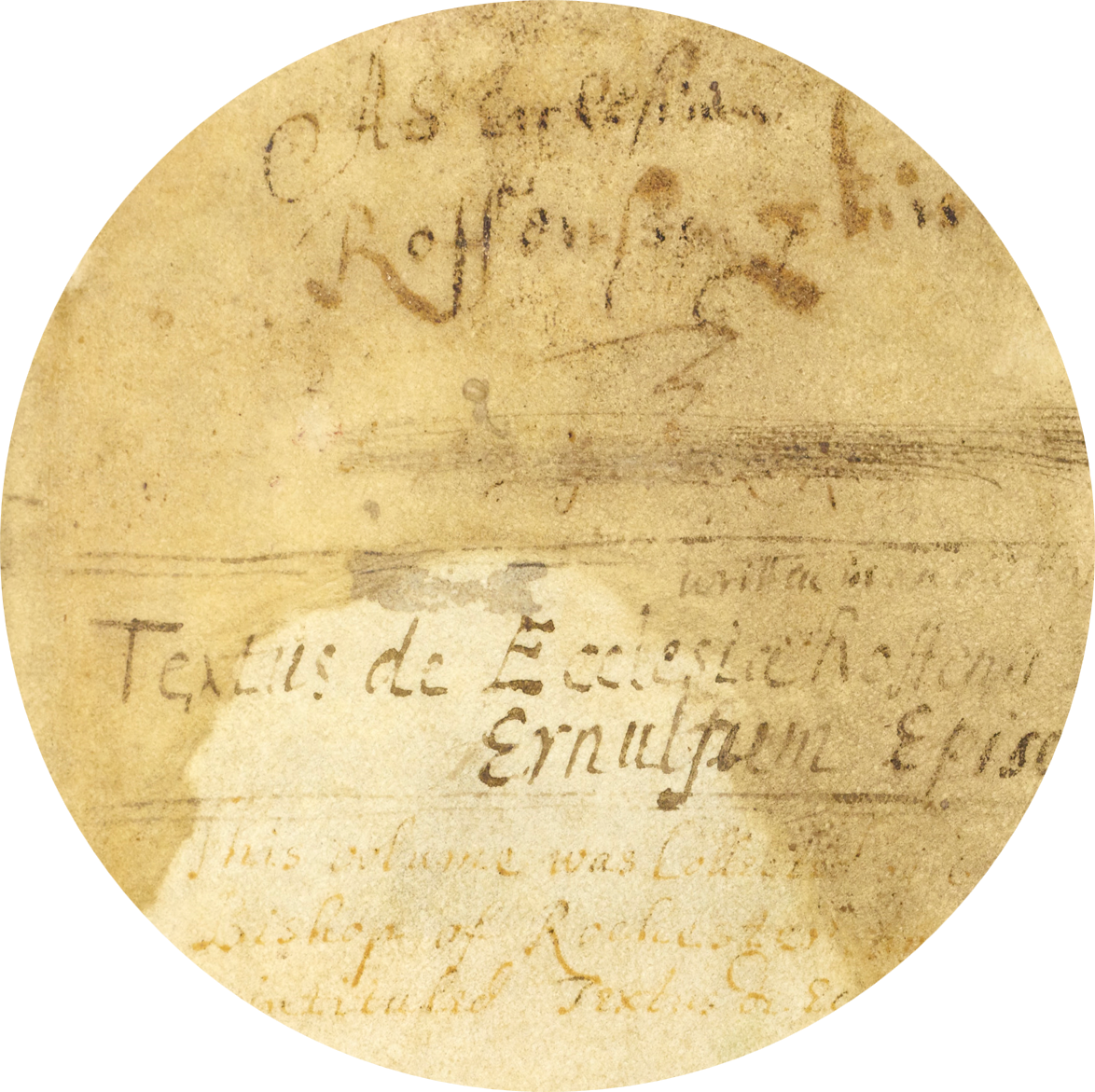William Lambarde (1536–1601)
/In 1573, the scholar William Lambarde came to Rochester Cathedral to examine Textus Roffensis. He was amazed to find that its opening document, Æthelberht’s law-code, was one he thought no longer survived. Moved by the importance of his discovery, he added a comment in the right margin, urging others to take note.
William Lambarde was born in London on 18 October 1536 to John Lambarde, a draper who served three times as Master of the Drapers' Company, as an alderman and a sheriff of London. William studied law at Lincoln's Inn and developed a keen interest in history.
In 1568 he published a collection of Anglo-Saxon laws entitled Archaionomia and in 1570 Perambulation of Kent, the first English county history. On 11 September 1570, at age 33, he married Jane Multon on her 17th birthday. She died in 1573, the same year as his visit to Rochester Cathedral.
published by William Richardson
line engraving, published 1812
NPG D25534
© National Portrait Gallery, London
Lambarde would go on to hold political offices, eventually serving as a Justice of the Peace for Kent. He continued his scholarship in this direction, and in 1581 published Eirenarcha: Or of the Office of the Justices of Peace, a manual for his office that would become the standard work on the subject. By 1591 he completed Archeion, or, A Discourse upon the High Courts of Justice in England. Although it would not be published until 1635, the Archeion circulated widely in manuscript. Lambarde sought to trace the Anglo-Saxon roots of English common law, prerogative and government. Common law is the law declared by judges, derived from custom and precedent, and contrasts with the civil law of the continent established by enactments expressing the will of the legislature.
‘Bede, book of the history of the Church [Ecclesiastical History of the English People].
It is noteworthy that these very laws were powerful within his [Bede’s] memory. Moreover, I am not aware that another copy of these may exist anywhere else; and for this reason you should value greatly this book, whoever you are who has stumbled upon it.
W[illiam] L[ambarde], 1573, for the grace of Antiquity.’
His long career within the legal profession and his antiquarian interests gave him a unique competency and placed his work at the forefront of the development of the concept of English common law at a crucial time in the history of England. Schoeck (1959) comments that, unlike on the continent where legal history was firmly established, there was little interest in history within English common law before Lambarde’s works. Later, the British Empire would export the common law model to its colonies in the New World and Australasia, and likewise the empires of continental europe would export the civil law model to much of the rest of the world. Though we can never know the true extent of the influences William Lambarde and Textus Roffensis had on the vast global changes that would occur in the following centuries, both hold a firm position in the fostering of a concept of English legal heritage in the modern world.
Originally blank, this page marks the end of the pre-Conquest documents in the cartulary. The annotations reads:
Though today it would seem irresponsible for us to write our own comments inside a very old manuscript, the history of medieval manuscripts is often one of readers adding further information, which is often referred to as glossing. Lambarde must have considered that he was carrying on this long tradition.
Find out more about the most exceptional item in the Cathedral collections comprising over 170 texts from the 8th to the 14th centuries.
Much abused since its compilation, follow Textus through the hands of bishops, priors, deans and notable antiquarians over 900 years.








